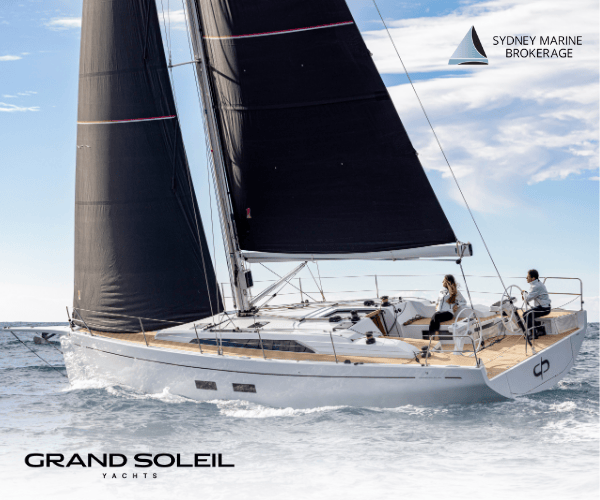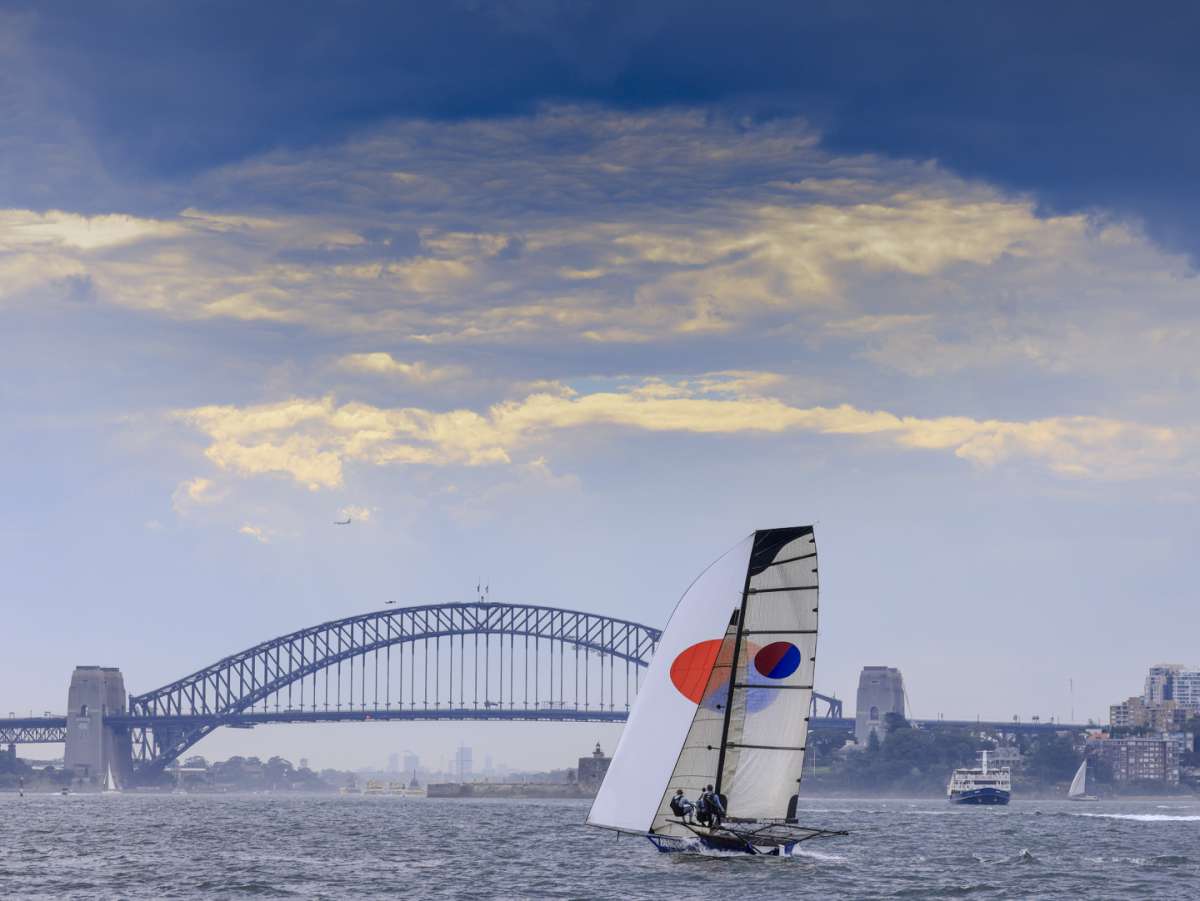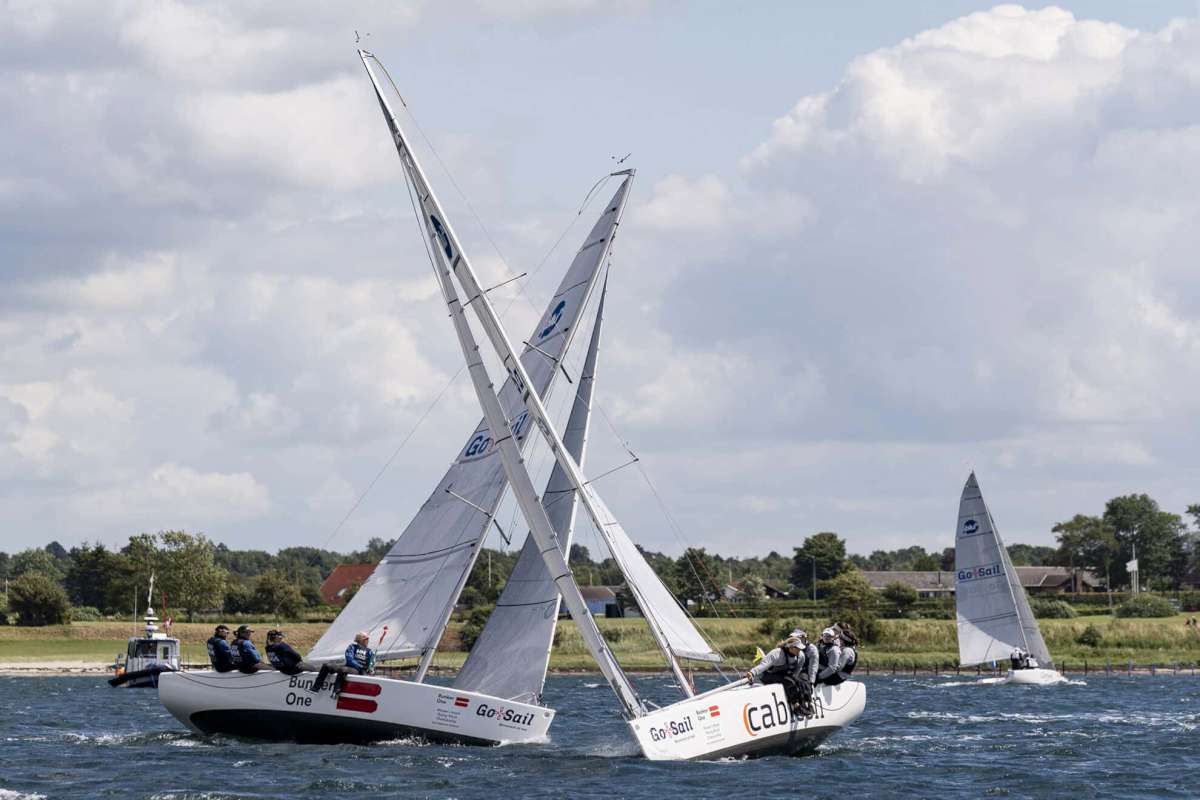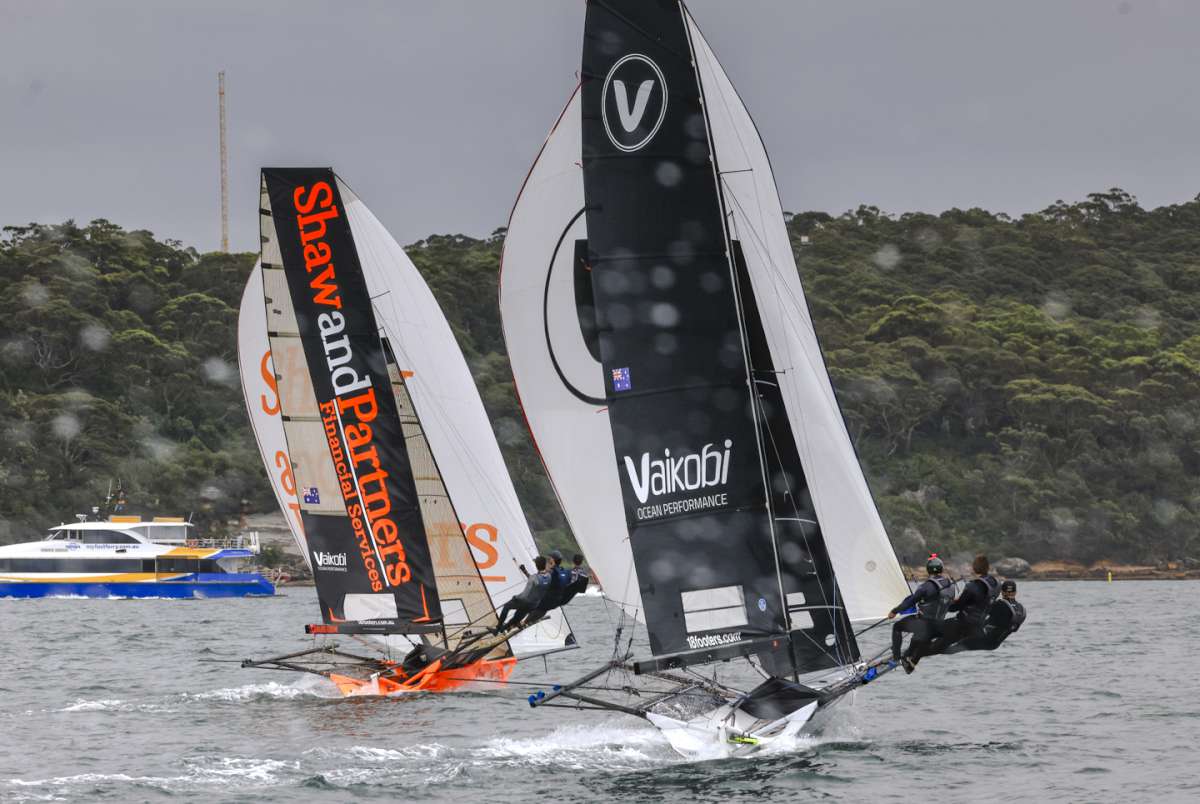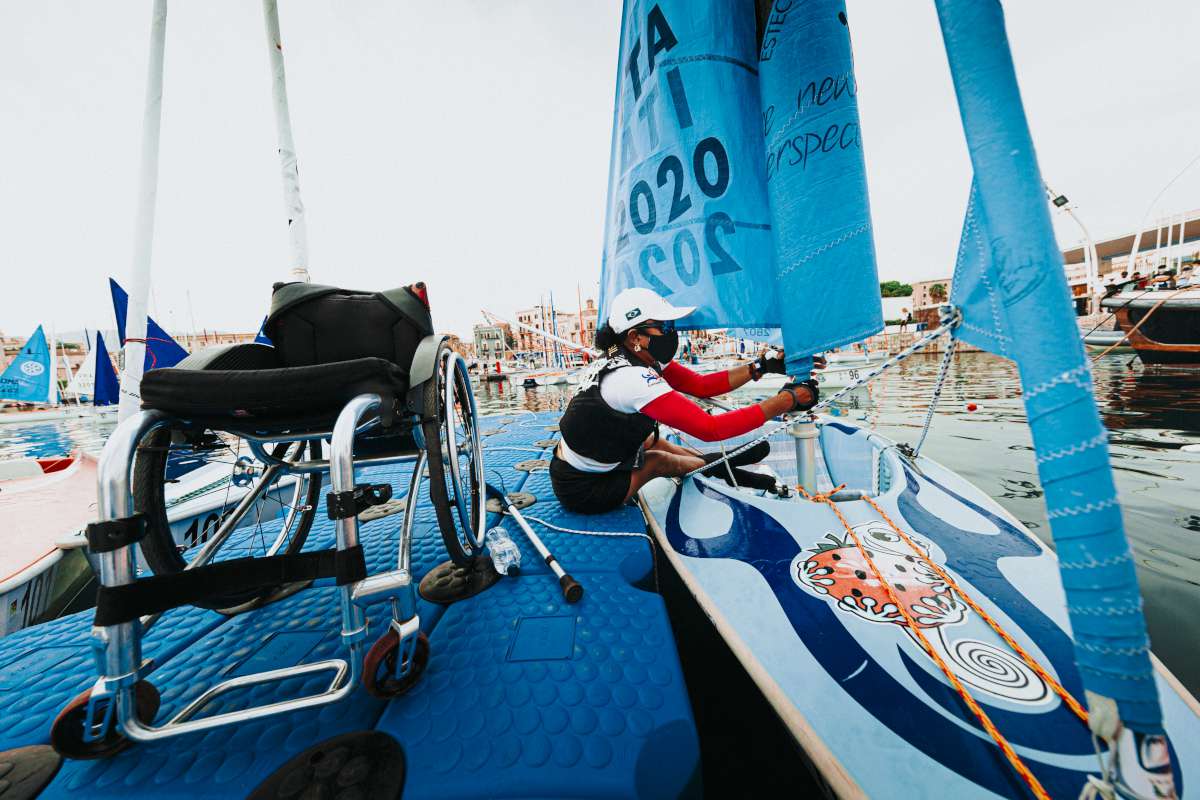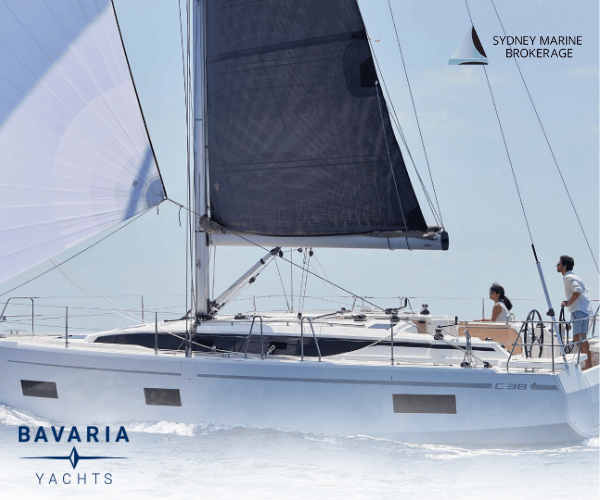We sailed into Turkey determined to be bound by no deadlines or obligations to do anything other than go where the wind blew us. The five weeks we were there comprised a long languid procession of hot and sultry days interspersed with afternoons of talking to local shopkeepers, meeting and making friends with other yachties, swimming, eating, sleeping, reading and, perhaps, moving onto a new town or bay. It was easy and relaxed cruising. But, we soon found out, our journey was to be also guided by a mysterious and elusive quest to comply with the requirements of Turkey’s ‘Poo Police’.
Settling in
When we cleared in at Bodrum, we knew we needed to obtain a Blue Card, the swipe card used by environmental authorities (a.k.a the Poo Police) to record our discharge of toilet waste to shore-based pump-out stations. However, the agent who cleared us in did not provide one because, as it turned out, there were no Blue Cards available in Bodrum.
Initially we were told to sail to the town of Datça and buy a Blue Card there. We had the feeling we were being palmed off and we were also concerned about not complying with the local regulations. Chatter on the internet had a number of stories from yachts that had been checked by the Coast Guard and fined for not having a Blue Card or for not pumping out frequently enough for the authorities to believe they had not been dumping waste at sea.
So, we took ourselves off to the government office that was meant to issue the Blue Cards and made it clear to a staff member we were not leaving without either a Blue Card or something in writing that explained why we did not have one. We pointed out that, by not providing us with a Blue Card and telling us to sail away to another town without one, they were asking us to break Turkish law and putting us at risk of a heavy fine from the Coast Guard.
To her credit she telephoned the Coast Guard to arrange a ten day amnesty for us to make our way to Datca and buy a card. She also gave us her name and telephone number to call if we had any problems with this arrangement along the way.
Now we had some more time we stayed on in Bodrum for a bit longer. The streets were crazy, busy, jammed with tourists shopping, dining and sightseeing. They arrived in coaches and ferries, by car and by planes; from Turkey, from all across Europe and beyond.
The shop spruikers had a line for all of us: “hello, how are you?” “Where are you from?” If you stopped to answer you were stuck, like a fly on sticky paper, desperately trying to free yourself without appearing rude. If you actually fancied looking at something you were caught for at least half an hour, stone-walling the sales pitch while you decided if you really wanted to purchase the item.
In amongst the stores selling jewellery, lamps, ornaments, rugs, leather sandals, soaps, confectionary etc., were shops packed with knock off ‘designer’ jeans, t-shirts, shoes and accessories. It was a shopaholic’s nirvana and I had to work hard at keeping the Lira in my wallet. It would have been very easy to go broke saving all that money.
The salespeople usually had a sense of humour though and would often get the message if you made a bit of a joke about them putting the hard sell on you. We usually got a laugh if we enquired about something to suit our dog Sophie. Also, John was often asked “how much for the little dog”, to which he usually replied, “one million dollars”. One chap tried again, saying, “no, seriously, how much?” John countered with, “for you, special price, two million dollars”.
This scored a hearty guffaw from the man and his friends.
We ate at a couple of restaurants but were disappointed because the food, although nice, did not have the spice and flavour we were expecting from Turkish dishes. Amongst the restaurants were smaller cafes and fast food style outlets. Some of these sold doner meat either as a meal or wrapped in pita bread to take away. As we passed by we could feel the heat from the spit, radiating out into the street and smell the tantalising aromas.
The layers of meat were dripping with juices and interspersed with seasoning vegetables: carrots, potatoes, onions. So, one evening we stopped and ordered a doner plate. It was probably the tastiest meal we had in Turkey: meat was beautifully tender and served simply with rice, pickles, cucumber and tomato. Absolutely delicious.
The days were hot and humid so we did a lot of our exploring in the evenings. We joined the throng that wandered through the shopping streets and along the harbour front. One evening we walked all the way around the harbour to the marina, looking for the chandlery.
The marina was full of yachts and powerboats and the harbour quay was packed with gulets; pronounced ‘goo-let’, a traditional design of Turkish wooden sailing vessel that is mainly built and sailed around the south western area of Turkey from Bodrum to Marmaris. On our way back we stopped for a drink and enjoyed a ‘limonata’, a very strong and very sweet lemon cordial style drink, which was extremely refreshing on, yet another, hot and humid evening.
However, after five days, Bodrum had become a little bit more like bedlam. In the anchorage we could hear the music from all the venues in the bar and nightclub strip at once, it went non-stop from about 10:30pm until 3am. A lack of sleep was making us miserable, as was the press of people and traffic in the streets. It was time to move on.
Moving on
We decided to head south to Datça so we could buy our Blue Card but along the way we would stop at the ancient site of Knidos.
We had a rip-roaring reaching sail out of Bodrum and along the coast of Kos to the western end of the Datça Peninsula. Once we were in the lee of Kos the wind strength started to ease, but there were still frequent bullets roaring down the mountainside, which had the autopilot steering a bit of a crazy course as Adele would round up into the wind and then bear off, as the gust blew through. Drawing closer to the Turkish coast, the wind died completely and we finished this leg under motor.
Knidos was one of six cities built by the Dorian peoples, one of the four cultural groups of ancient Greece. It was based around a double basin harbour, which had been created by building a bridge and causeway between the mainland and the island lying close offshore.
On the eastern side was the commercial port; on the western side was the harbour for triremes, fast manoeuvrable warships with three lines of rowers on each side. An isthmus of land now covers the bridge and causeway but remains of the ancient harbour walls are still present. Although the trireme harbour is silted up to unnavigable depths, it is still possible to anchor in the eastern bay.
When we arrived, the anchorage was quite full with boats anchored and several gulets moored to the shore with stern lines. We found ourselves a spot and set the anchor firmly on a nice sandy bottom in around twelve metres of crystal clear water.
A number of yachts were also tied up to the small jetty and pontoon operated by the owner of the taverna located onshore. Generally, the tavernas allow you to tie up to the jetty on the understanding you will have a meal at their establishment, but I think at Knidos the yachts were being charged a nightly fee.
The hillsides around the bay were rocky and sparsely vegetated. The small beach along the isthmus was lined with some Cyprus pines and Canary Island date palms. The taverna and bar were nestled into the side and top of a small rise behind the beach. To the north the land rose gradually to reveal the workings of the archaeological site. The area which has been excavated is not large and the remainder of the site, still overgrown or buried, extends north and east up the mountainside, covering more than 100 hectares of land.
Despite the severity of the landscape, we found Knidos to be peaceful and relaxing. So we were reluctant to leave, but we weighed anchor after four days as our amnesty from the dreaded Poo Police was running out and our quest for the elusive Blue Card was unfinished. We needed to get to Datça.
Sailing downwind, with a following sea, had us in Datca by the early afternoon. Keen to complete the Blue Card mission as soon as we could, we hopped in the dinghy and hot-footed it ashore: literally because we forgot to take our thongs with us! Once we found out where we could buy the card, we got our priorities right and stopped for a cool drink. We then decided the Blue Card could wait until the morning and we continued to sit and enjoy the view across the town quay to the harbour.
The next morning we duly purchased our Blue Card from the local fishing co-operative. But the Poo Police said, “ha ha, not so fast”. We discovered our mission was far from complete as we could not empty our holding tanks at Datça. They could only take waste from a vessel that could pump it from the boat into the harbour’s waste pipe and we needed a facility that would suck it out of our tanks.
We were told that the nearest place that could do this was a marina just over 20nm further east. We could either laugh or get livid about this increasingly ridiculous situation. We decided to laugh. We also decided that instead of racing off to empty the tanks within our ten days we would take our chances with the Poo Police and stay a few days in Datça to look around properly.
The town quay was busy with cruising yachts and gulets taking day-trippers to the nearby Greek islands of Rhodes and Symi. Most of the yachts were Turkish, but there were a couple of Brits, Germans and one other Australian in port. We stayed in the anchorage but most of the other yachts anchored only until they could get a spot on the quay.
We found the town itself to have a pleasant mix of tourism and everyday Turkish life. Beyond the southern end of the beach was a lovely botanic garden style park with seating areas, a children’s playground and rambling paths shaded by a variety of large leafy trees.
Next to the park was the mouth of a hot spring which had been dammed to create a swimming lake alongside the beach. It was a great family area and one of the nicest public spaces we had seen in our travels so far.
Our morning amble along the retail strip took us past a carpet shop that also had some interesting ornaments and objet d’art which caught John’s eye. We stopped to look and the proprietor invited us in. This could have been a fatal mistake but we went in anyway determined not to get caught by a smooth sales pitch. We exchanged some pleasantries and he offered
us a seat and some water.
We said we were not really interested in buying anything and he said: “that’s okay, just sit and have a drink”. He despatched his son to the back room who promptly returned with two bottles of water. He introduced himself, Hassan and his friend Bekir, who was visiting from Istanbul. That was the start of two long sessions, sitting in the shop chatting, joking, drinking Turkish tea and solving the problems of the world.
Unfortunately we had to leave Datça sooner than we would have liked, our holding tanks were nearing capacity and we had to get them sucked out. So off we went, eastward into the Hisarönü Gulf. The mountains enclosing the gulf were steep and thickly wooded, cleft with deep fjord-like bays where yachts and anchored gulets could be seen.
We arrived at our destination, Keçi Bay and anchored on the western side, nestled in behind an islet that was topped with the remains of a Byzantine fort. The day was hot, hot, hot and humid with it. Tucked in the bay as we were there was no cooling breeze either, so the only way to cool off was to jump in the water, which although warm, was still refreshing.
The next morning we motored over to the marina fuel dock, did our business with the poo pump, filled up with diesel and returned to the anchorage. Job done: finally. We were now compliant with Turkey’s marine environmental laws, phew! Score: Adèle: 1, Poo Police: 0.
That evening we took the dinghy over to the eastern shore, had a meal at one of the restaurants and went for a long walk to the head of the bay. About three quarters of the way along a sand spit extends from the beach halfway across to the other shore. We could see a long line of people walking out onto the spit, only knee deep in water: it was quite a strange sight.
The shore was lined with restaurants and holiday accommodation and it seemed most of the visitors were Turkish people on holidays. Again, there were lots of families, which always make a place seem happier.
As we walked through a park, I saw a woman patiently setting up a small wood stove and, curious, I approached to have a closer look. She noticed me and I explained that I was wondering what she was using the stove for. She told me she was making tea, then asked me if I would like some. I declined but was overwhelmed by the friendly and hospitable offer.
Let loose
We now had a greater sense of being free to go where we pleased, so decided we would move on the next day. However, as we sailed westward, it became apparent that, while we may have been free, all the bays where we could have stopped were not. They were full of gulets, which were anchored and tied back to the shore with stern lines.
This meant the only available spaces were in the middle of the bays in water that was too deep for us to anchor in. So we kept sailing, and enjoying the scenery.
We rounded Point Atabol at the western end of the gulf and turned east again into Yeşilova Gulf, still looking for a bay with room for us to anchor. On we went until we approached Kizil Island, 2nm to the south of Bozburun Harbour. We cautiously made our way through Kizil Passage, a narrow and shallow channel of water between the mainland, Kizil and Kiseli Islands, past the crowd of yachts and gulets moored stern to on both islands. We finally found a vacant patch of water off a small beach just north of Kiseli Island.
Unfortunately, by nightfall we had been joined by three gulets, who had all moored up stern to the shore. It made for some interesting moments as we were swinging to our anchor and sometimes ended up uncomfortably close to these other boats. Thankfully, though, they may have been close neighbours but they were not noisy ones and we slept undisturbed.
Onshore, adjacent to the beach, were the ruins of an ancient building, which we think may have been a bath house and a water well. The ruins were overgrown and uncared for and the surrounding area was strewn with masses of pottery shards that would make the Time Team squeal with delight, but lay here ignored and unvalued.
Similarly, at Knidos, small pieces of pottery and marble formed part of the rubble base used for the roads and paths. We could only suppose that this was so because, in comparison to the vast amounts of more intact artefacts in both Turkey and Greece, small pieces of pottery and stone were of little or no interest.
Bozburun was located at the end of a long and narrow bay, enclosed by the steep mountains we had seen further north, but the densely wooded hillsides had given way to barren and rocky slopes. The town harbour was a major port for gulet and other charter operators and, on Fridays and Saturdays, the town and quay were busy with charter vessels coming in to change-over. That is, passengers who had finished their cruise were disembarking and new guests were joining the boats, plus the crews were busy taking on provisions, fuel and water and agents were diligently clearing both passengers and crew in and out with immigration, customs and the harbour authority.
Despite the activity we saw, we were told business in town was quiet this year as a number of yacht charter companies had moved flotilla charters to Greece and Croatia. Apparently this was in response to safety concerns arising from the current political climate in Turkey, even though this area was far from any of the trouble hot spots. It was, however, quite busy enough for us.
Unfortunately, John fell ill with gastro flu the day after we arrived so our first week at Bozburun was pretty quiet. He rested and I read. However, with the help of some serious Turkish pharmaceuticals he was eventually back on his feet.
Toward the end of the week we met up with fellow Aussies, Robert and Cathy on board Olé, a 45 foot Lagoon catamaran. They had seen our flag as they came into the anchorage and then chased me down in their dinghy when I went past on one of my solo trips ashore.
Stopping by for an afternoon cuppa would carry on until the evening. Catching up for morning coffee would draw out until lunch time. And the first week became the second.
Our friend Hassan in Datca had told us to visit his friend Lyn, at Osman’s Restaurant, which we did. We discovered Lyn was also the Honorary Local Representative (HLR) for the UK-based Cruising Association of which we are members. We made friends with Lyn and her husband Osman, their waiter Mehmet and a stack of other yachties as well. So the second week melded into the third.
We spent a fair bit of time at Osman’s Restaurant with Robert and Cathy. It turned out they were in no hurry to go anywhere either. The people in Turkey were friendly and welcoming and we were enjoying ourselves in Bozburun.
It was hard to leave when it was time to head back to Greece. Turkey was a place we would like to visit again.
It turned out Turkey was a delightful place to go cruising. ≈




